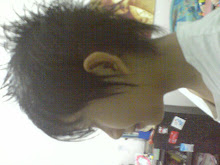Traditional game : Congklak ( dakonan )

One of the most fascinating things about living in Indonesia is the discovery of bits of Indonesian culture which are actually not Indonesian at all, but originate in other lands. For centuries, the Indonesian archipelago has been visited by traders from many corners of the world who came to buy spices and other agricultural riches. Indonesian cultural diversity benefited by the many peoples who passed through the archipelago, due to Indonesia's location along the primary trade route between Europe and Asia.
Historical references to Congklak refer to the game played by young girls of Javanese nobility. It is most likely that foreign traders, due to their close contact with the upper classes, introduced Congklak to them. With the passage of time, Congkla' s popularity grew until its now widely played by the common people as well. In most regions, Congklak play is limited to young girls, teens and women in their leisure time and its seen as a 'girl's game'. In only a few regions is Congklak played by men and boys as well.
The playing board is made from wood, with variations from island to island in the number of holes on each side, either 5, 6, 7 or 9 holes. All the boards have two 'store house' holes, one on each end. The design varies from simple, unadorned woods, to boat-shaped boards, to highly decorated playing boards. In Central Java, elaborate designs utilizing the Javanese naga (dragon) are common. Dragons face out from both ends, with their tails decorating the side of the boards and legs suspending the board up off the floor. Congklak boards can be elaborately carved and painted, with gold and red being popular colors. Most, however, are made of relatively plain wood.
As in the archaeological find in Jordan, diggings in Mojokerto, Lamongan and Bondowoso in East Java have unearthed Congklak 'boards' with holes carved into large stones. These were found along with the broken pieces of temple stones and other archaeological remains of earlier times.
Not much has changed since prehistoric times, when Congklak was played with stones or seeds. In Indonesia, stones, seeds and shells are used to play the game, whatever is close at hand. Near a beach shells may be used. Near rivers, the game may be played with smooth pebbles and in agricultural areas, seeds. Commonly used seeds are tamarind, kemiri, sawo and even corn kernels.
Whatever version you play today, and by whatever name you call it, you'll find Congklak a challenging game of patience and skill.

0 Komentar:
Posting Komentar
Berlangganan Posting Komentar [Atom]
<< Beranda